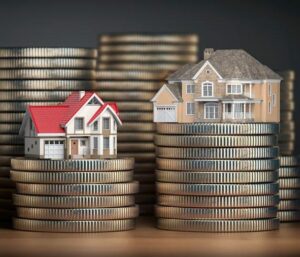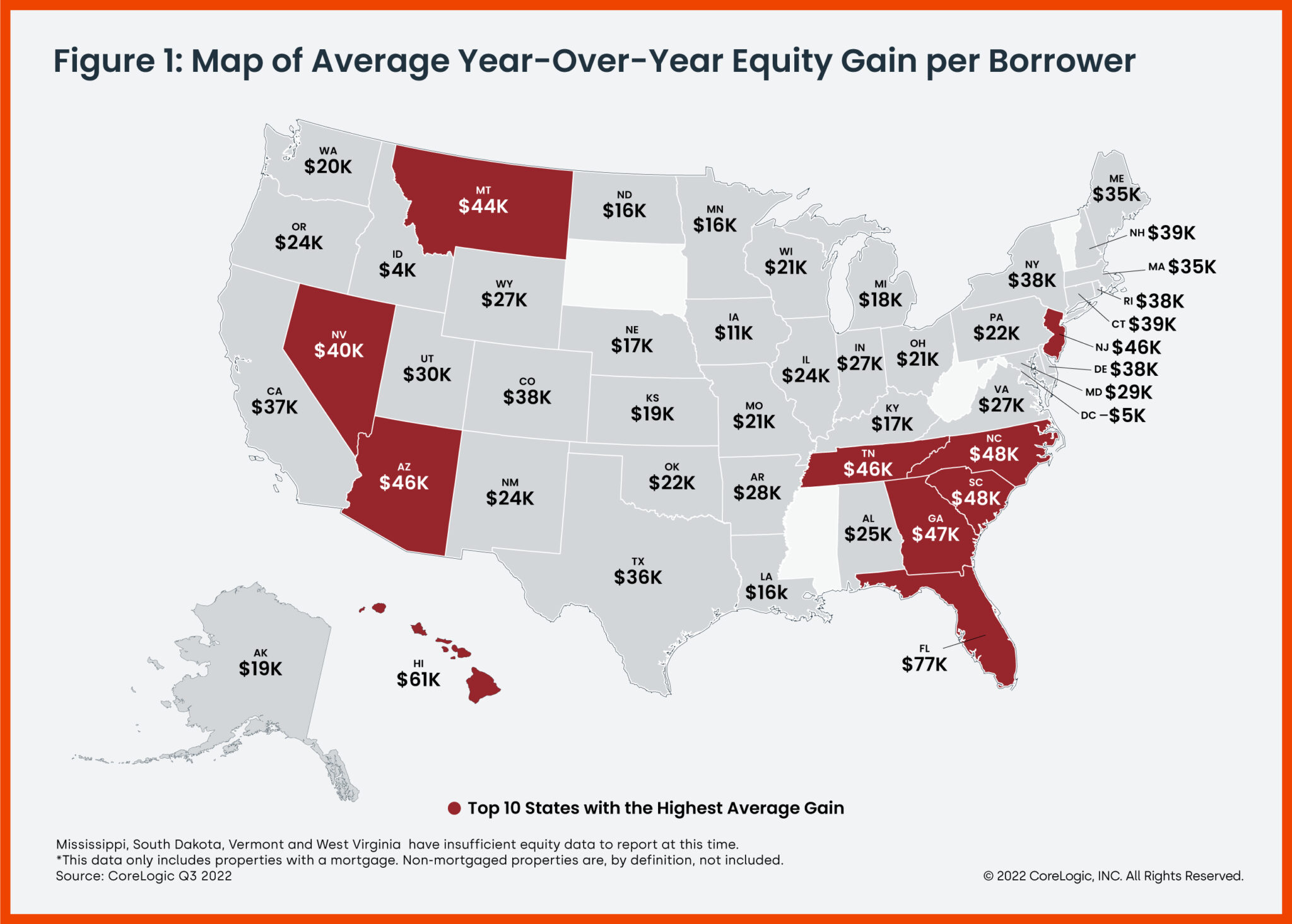 CoreLogic has released its latest Homeowner Equity Report (HER) covering the third quarter of 2022 finding that of all homeowners with mortgages, or roughly 63% of all properties, saw their home equity increase by 15.8% year-over-year, or $34,300 per borrower.
CoreLogic has released its latest Homeowner Equity Report (HER) covering the third quarter of 2022 finding that of all homeowners with mortgages, or roughly 63% of all properties, saw their home equity increase by 15.8% year-over-year, or $34,300 per borrower.
This new equity represents a collective gain of $2.2 trillion.
However, annual home equity gains began to slow in the third quarter coming down from $60,000 of annual growth in the second quarter.
Slowing home prices also caused 43,000 properties to fall underwater during the third quarter.
As home price gains are projected to relax into single digits for the rest of 2022, then possibly move into negative territory by the spring of 2023, equity increases will likely decline accordingly in some parts of the country.
“At 43.6%, the average U.S. loan-to-value (LTV) ratio is only slightly higher than in the past two quarters and still significantly lower than the 71.3% LTV seen moving into the Great Recession in the first quarter of 2010,” said Selma Hepp, Interim Lead of the Office of the Chief Economist at CoreLogic. “Therefore, today’s homeowners are in a much better position to weather the current housing slowdown and a potential recession than they were 12 years ago.”

“Weakening housing demand and the resulting decline in home prices since the spring’s peak reduced annual home equity gains and pushed an additional number of properties underwater in the third quarter,” said Hepp. “Nevertheless, while these negative impacts are concentrated in Western states such as California, homeowners with a mortgage there still average more than $580,000 in home equity.”
According to CoreLogic, negative equity, also referred to as underwater or upside-down mortgages, applies to borrowers who owe more on their mortgages than their homes are currently worth. As of the third quarter of 2022, the quarterly and annual changes in negative equity were:
- Quarterly change: From the second quarter of 2022 to the third quarter of 2022, the total number of mortgaged homes in negative equity increased by 4% to 1.1 million homes or 1.9% of all mortgaged properties.
- Annual change: In the third quarter of 2021, 1.2 million homes, or 2.2% of all mortgaged properties, were in negative equity. This number declined by 9.8% in the third quarter of 2022, to 1.1 million homes or 1.9% of all mortgage properties.
Because home equity is affected by home price changes, borrowers with equity positions near (+/- 5%), the negative equity cutoff, are most likely to move out of or into negative equity as prices change, respectively. Looking at the third quarter of 2022 book of mortgages, if home prices increase by 5%, 127,000 homes would regain equity; if home prices decline by 5%, 172,000 properties would fall underwater.

 DSNews The homepage of the servicing industry
DSNews The homepage of the servicing industry









